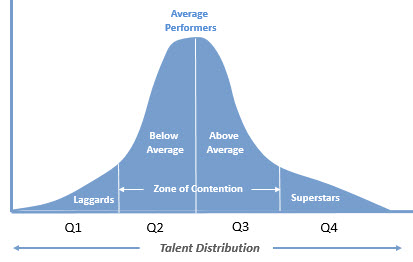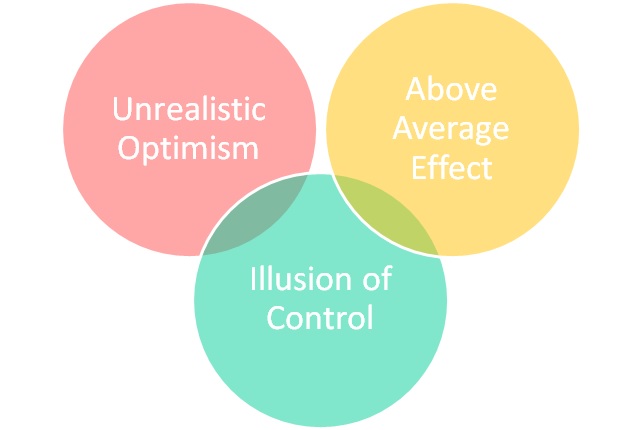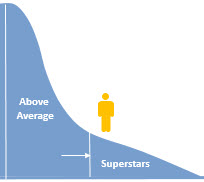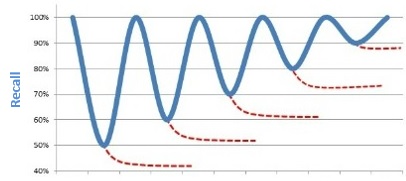CPO’s, HR & Trainers should be wary of self-assessments of skill, expertise, and knowledge
In the same way that people embellish their CV’s to get a job they also exaggerate their skill set to gain a promotion or raise. Countless research has shown that self-assessments of skills are often flawed in substantive and systematic ways.
The research has found the correlation between employees self-assessment of skill is moderate to meager when compared to their actual behavior and performance:
- People overrate themselves.
- On average, people say that they are “above average” in skill (a conclusion that defies statistical possibility)
- People overestimate the likelihood that they will engage in desirable behaviors and achieve favorable outcomes
- Their estimates are overly optimistic of when they will complete future projects, and
- Reach judgments with too much confidence.
Research in education finds that learners’ assessments of their performance tend to agree only moderately with those of their trainers and mentors:
- Learners seem largely unable to assess how well they comprehended a subject after training
- They tend to be overconfident in learned skills
Similarly, in the workplace, this trend for employees to overestimate their skill, makes it difficult to give meaningful feedback.
The act of self-assessment is intrinsically difficult. Based on our own and historical research, we discuss several obstacles that prevent people from reaching truthful self-impression and the difficulty this can cause managers and their organizations.
1. The Evidence on flaws in Self-Assessments
Decades of research has proven that people have a modest level of insight, at best, into their skill and character:
- First, researchers tend to find fairly small correlations between perceptions of skill and objective performance.
- Second, people tend to be too optimistic about their talents, expertise, and future prospects.
This tendency is categorized by what has become known as the three dimensions of self-enhancement. Fig: 3
1.1 Correlations between Perception and Reality
When researchers correlate self-assessments of knowledge and skill against objective performance, the relationship they find are rarely strong. Typically, it is modest to meager, and sometimes it is null:
“Students’ ratings of their academic skill during their first year of college correlate only .35 with the evaluations their instructors give them. In the workplace, the correlation between how people expect to perform and how they perform hovers around .20 for complex tasks.”
1.2 Distribution of Talent
The Bell Curve (Fig 1) below shows what statisticians call a “normal distribution.” A normal distribution represents an arithmetic average and equal distribution above and below average like the curve below.
This model assumes we have an equivalent number of people above and below average, and that there will be a very small number of laggards and superstars. Such a curve is totally theoretical and organizations will have talent skewed towards the laggards or superstars (Fig 2).
 Fig 1: Normal Talent Distribution: No Skew
Fig 1: Normal Talent Distribution: No Skew
While it is desirable to pursue a talent strategy focused on achieving a positive skew based upon actual performance, it is not desirable to have an assessment system with positive bias built into it.
2. Why is it a problem?
This tendency for employees to overestimate how great they are, how smart they are, and to overestimate their chances of being successful produces flawed assessment outcomes. Research on self-assessment variability also shows how individuals self-evaluations can change over time associated with important psychological states.
For the organization the more they support this over exaggeration of employee abilities, the more likely employees are to take unwarranted risks for the organization. For the employee, they are likely to overestimate their chances of success in a career and believe they’re more likely to rise to the top of the organization, to become an influential manager.
I’m not saying that employees don’t have a good enough chance of doing these things to make it worth trying. But if you want employees to know where best to work to make the most difference, an accurate picture of where their chances of success are best is required.
In organizational life, the largest surprises generated by a lack of self-knowledge may be those when the managers who set raises and recommend promotions do not mirror the self-evaluation. If employees overrate their performance, and managers provide honest feedback, it is difficult to imagine how people will not end up disappointed at least some of the time.
2.1 Perceptions of fairness
One study of several hundred employees found that 32% of one company and 42% in the other rated their performance in the top 5%. Imagine the difficulty of conducting honest performance evaluations for these employees, which makes providing honest feedback a challenge.
Although workers may find it tempting to blame their managers when they receive a disappointing evaluation, research suggests that they should trust their managers’ views more than their own. Typically, the views of other people—subordinates, peers, and superiors—agree with each other more often than with self-views.
The problem is, an employee’s immediate manager filters the feedback, and though well intentioned, may be less than fully objective. Choosing to downplay their subordinates’ talents, accomplishments, and potential or quietly sabotaged their own people’s upward mobility.
2.2 Positively Skewed Assessment
Many organizations chose self-assessments because they believe, incorrectly, they reduce employees’ concerns with the evaluation system. However, the tendency for self-enhancement supports positively skewed assessment outcomes, with negative consequences.
If an organization has a culture of politeness, where managers are unable to confront poor or exaggerated performance, a self-assessment will produce a positively skewed outcome and is likely to demotivate any good employees you have left.
Organizations that have positively skewed evaluation systems may get away with singling out a few Q4 performers, those whose peers agree are clearly deserving. However, if they avoid tougher distinctions among people in the middle of the distribution, where quality distinctions may be more contested, the perceptions of equity become damaged.
The perceived ‘equity cloak’ of self-assessments cleverly allow organizations to select the best (and get rid of the worst) with the fewest ruffled feathers. The problem, however, is that these systems do not provide people in the ‘contention zone’ of the distribution with the motivation to improve their performance.
None of this plays well towards achieving a goal of fairness, and long-term trust becomes damaged between employees and the organization.
2.3 The three dimensions of Self-Enhancement
People hold unrealistically positive views about themselves. The three dimensions of self-enhancement captures these exaggerated views.
 Fig 3: The three dimensions of self-enhancement
Fig 3: The three dimensions of self-enhancement
These exaggerations occur across many situations and are highly resistant to revision. Ironically, when notified of the existence of such illusions, people consider themselves to be less prone to them than others.
2.3.1 Unrealistic Optimism
- Overestimation of Ability
- Overestimation of the Likelihood of Desirable Events
- Underestimation of Task-Completion Times
- Overconfidence in Judgment and Prediction
2.3.2 Above-Average Effects:
 Fig 4: I am Better than Average
Fig 4: I am Better than Average
2.3.3 Illusion of Control
3. Convenience
Self-assessments can be time-consuming to perform. Because most learners do not have prior experience of self-assessment, they can be a more complex and time-consuming method when compared to tests.
Because of self-assements proven tendency towards bias, it is necessary to follow up the participants self-assessment with an evaluation interview to mediate the learners own assessment. A typical process is:
- During self-assessment, learners reflect on their knowledge, skills and capabilities.
- A second step is required to moderate the tendency towards over-optimism, and to mediate the outcome via an interview process.
One of the advantages of a test is convenience.
That tests are convenient and flexable is long recognized. Almost 100% of learners have experience in taking tests, giving tests a huge advantage. Online assessments are easily accessible and can be accessed when it is convenient rather than at a fixed prescribed interview time. And because tests focus on specific answers to questions, the participants receive instant feedback on their results vs. the target performance.
4. Continuous Learning & Measurement
Learners, obviously, profit from an assessment that is accurate. They make more effective decisions about where to apply their learning efforts when they can accurately discern their strengths and weaknesses.
Accurate assessments allow learners to become more autonomous agents in their education, taking responsibility for gaining and improving their knowledge and skill. Accurate assessment is valuable all the way up the organizational ladder.
However, it is especially crucial in professional settings, where problem-based learning is typical.
4.1 Assessments and Professional Development Programs
In problem-based learning, learners in cohorts, learn by confronting real-world cases, and figuring out how to approach challenges to bring it to a reasonable resolution. This approach places a premium on problem-solving skills, professionalism, and learning in a real life environment.
An essential component of problem-based learning requires learners to identify what skills they need to acquire and what knowledge they must gain—in short, they must make accurate assessments of strengths and development needs.
Accurate assessment is also crucial for personal development to be a lifelong endeavor that continues far after the learner has left the program and professionals must continue to educate themselves in a changing business environment.
Against this background, self-assessments meager to modest accuracy suggest a better alternative is required. Tests, provide an alternative that provides accurate data of employees knowledge, and while knowledge is not a complete indicator of competence, it is unlikely that employees without the required knowledge of best practice will be applying it on the job.
4.2 Managing, Measuring & Reporting Learning Outcomes
Organizations need to understand learner attitudes and skills to measure outcomes. Collecting this information can be challenging when data is separate and tools or processes are not coordinated.
Self-assessment, with all its inaccuracy, is also extremely difficult and time-consuming to conduct and aggregate outcomes in a meaningful way. It is also impossible to measure learning accurately and decide upon learning interventions.
With tests, provided the system capabilities are available, this becomes a reality. Managers can automatically access assessment outcomes directly from desk-top analytics, which removes burdensome assessment activities and replaces them with quick and easy access to actionable data for managers and learners.
The test data can provide the evidence managers need to showcase the success of their development programs, make data-driven decisions to engage with their team, and demonstrate continuous improvement:
- Be more responsive: Get clear, readable results in real-time with predefined reports and dashboards.
- Identify activities at risk: Before they impact your performance.
- Gain company-wide visibility: Whether it’s local, national, regional, or global, address company wide assessment, so you can see what is going on in all your procurement capability building programs in a single place.
Managing this complex process and demonstrating continuous improvement of learning outcomes is a painstaking task for any organization. A scalable test platform can capture learning outcomes effortlessly, to make sure your learning programs are aligned with the company mission and meet performance requirements.
4.3 Assessments & Reinforcement:
Self-assessments do not enhance learning. Self-assessment allows learners to ‘judge’ their knowledge and capability for the purpose of establishing development needs. In contrast, studies show that when learners take a test, it results in better learning and retention than does a repeat of the target material.
 Fig 5: Learning Retention Improves with each Reactivation Event
Fig 5: Learning Retention Improves with each Reactivation Event
Testing does not merely reinforce memory because of repetition of material, but rather because of a reactivation effect. This increase in learning is demonstrated in Fig 5.
5. Procurement Assessments: The problem with selfies
Conclusions
The views that people hold of themselves are often flawed. People often claim to have skills and capabilities to a degree that they do not. The correlation between those views and their objective behavior is often meager to modest.
The problem is twofold:
- Firstly, it creates an artificially high starting point in a ‘negotiation’ between manager and employee to bring about objectivity, which can be difficult for managers. A positively skewed assessment outcome is typically the result.
- Secondly, managers wishing to act in their self-interest may negatively skew results for certain employees.
It is important to note that researchers have observed mistaken self-judgments not only in laboratory experiments, but also, more important, in real-world settings. All told, the evidence suggests that there is striking consistency in the errors that people make when assessing themselves, supporting the warning to be wary of self-assessments.
5.1 Replacing Self-Assessments with Tests
Tests can improve both organizational and personal understanding of ability and how to improve it.
A well-constructed test is 100% objective – no subjective analysis, self-assessment or opinions. Just credible, reliable and equitable results.
With skills gap data from a test, targeted training of employees in the organization’s key competencies can improve their competency level and gain real insight into their strengths and development needs. The employee wins by gaining accurate insight into their skills to target career aspirations while the organization get’s the benefit of improved competence, and the only positive skewing will be the increased capability of its talent pool. It’s a win-win.
Nuff said…
If you would like to learn more about our iProcure assessment platform, contact for a free demonstration here

iProcure provides the most reliable and comprehensive reporting capabilities available

